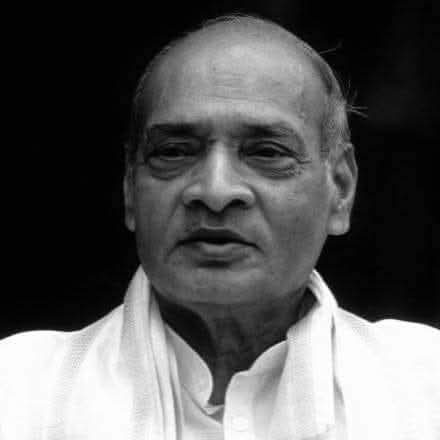Pamulaparti Venkata Narasimha Rao, India’s 9th Prime Minister, served from 1991 to 1996—a period that saw India at a crossroads. A seasoned Congress leader and polyglot with a reputation for quiet intellect, Rao took over a nation teetering on the brink of economic collapse and civil unrest. Yet despite his monumental contributions, particularly in economic liberalization,
Rao remains a controversial figure within the Indian National Congress. The question, therefore, is not merely whether Congress has forgotten Rao—but whether it can afford to do so.
The Architect of Economic Reforms:
Rao’s most enduring legacy lies in ushering India into the era of economic liberalization. In 1991, India faced a severe balance of payments crisis. Foreign reserves had dwindled to the point where the country could barely finance two weeks of imports. It was under these dire circumstances that Rao brought in Dr. Manmohan Singh as his Finance Minister and gave him the political cover to implement sweeping reforms.
These reforms dismantled the License Raj, reduced import tariffs, encouraged foreign investment, and privatized many public sector undertakings. This marked the beginning of India’s integration into the global economy and laid the foundation for the explosive growth seen in the 2000s and beyond.
Ironically, while Manmohan Singh is widely credited with these reforms, it was Rao who took the political risks. As Prime Minister, Rao showed both foresight and resolve, resisting opposition from within his own party to push through unpopular but necessary changes. Without his leadership, Singh’s policies might never have seen the light of day.
Political Longevity and Crisis Management:
Apart from economic reforms, Rao’s tenure was marked by deft political maneuvering. Despite leading a minority government, he managed to complete a full five-year term—a rarity in Indian politics at the time. His ability to manage coalitions, silence dissent within the party, and navigate a treacherous political landscape speaks volumes about his acumen.
He also handled significant crises such as the separatist movement in Punjab, insurgency in Kashmir, and growing communal tensions. While not without criticism—especially concerning the 1992 Babri Masjid demolition—his responses often reflected a deep understanding of India’s complex socio-political fabric.
The Gandhi Dynasty and the Erasure of Legacy:
One of the more curious aspects of Rao’s posthumous treatment is the seeming indifference—or even hostility—from within his own party. His relationship with Sonia Gandhi was reportedly strained. After Rajiv Gandhi’s assassination in 1991, Rao was chosen as a compromise candidate for Prime Minister, sidelining Sonia’s influence within the party. Some believe this led to long-standing tensions.
When Rao died in 2004, his body was not allowed inside the All India Congress Committee (AICC) headquarters—an unprecedented decision for a former Congress Prime Minister. Instead, he was cremated in Hyderabad, not Delhi, further symbolizing the party’s distancing.
While Congress has recently attempted to rehabilitate his image, including a commemorative event on his birth centenary in 2020, the gestures feel belated and lack the grandeur often afforded to other party stalwarts like Jawaharlal Nehru or Indira Gandhi.
A Legacy Larger Than Politics:
Rao was more than a politician; he was a scholar, linguist, and writer. Fluent in over a dozen languages, including Sanskrit, Persian, French, and Spanish, he was one of the most intellectually gifted leaders India has produced. His writings—ranging from fiction to philosophical essays—reveal a deeply reflective mind.
He was also among the few Indian politicians who successfully transitioned from state to national leadership without relying on dynasty or populism. His rise was rooted in merit and persistence, a rarity in Indian politics dominated by familial legacies.
In Telangana and Andhra Pradesh, Rao is remembered fondly. Efforts to honor him with memorials and academic institutions bear testament to his regional popularity. However, this regional recognition contrasts sharply with the lukewarm acknowledgment from the national Congress leadership.
Can Congress Truly Forget Him?:
If the Congress Party continues to ignore Rao’s legacy, it does so at its own peril. At a time when the party struggles to find an economic narrative and reclaim national relevance, revisiting Rao’s pragmatic leadership could offer valuable lessons. His mix of economic liberalism, political pragmatism, and technocratic governance is precisely the model that many political observers say the Congress needs today.
Moreover, owning Rao’s legacy would help Congress broaden its appeal beyond the Nehru-Gandhi family. By honoring leaders like Rao, the party can project a more inclusive history, which could revitalize its image among younger voters and intellectuals who value policy over personality.
Recognition Long Overdue:
P.V. Narasimha Rao was not a flamboyant leader. He was not a crowd-puller like Indira or Rajiv Gandhi. But he was a visionary, a reformer, and a survivor. His legacy cannot be confined to footnotes, nor should it be buried under political grudges.
Congress may have, at times, tried to forget him. But history has not. His contributions are too significant, too transformative, to be erased. The real question is whether Congress has the maturity to embrace its full legacy—warts and all—or if it will continue to view its history through the narrow lens of dynasty and loyalty.
As India looks ahead to new challenges—economic, political, and social—Rao’s legacy offers a template worth revisiting. For Congress, forgetting him is not just a political oversight; it’s a missed opportunity to reconnect with a chapter of competence, courage, and change.

